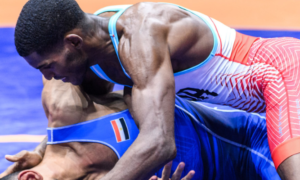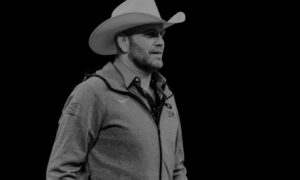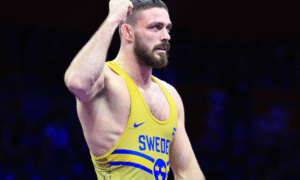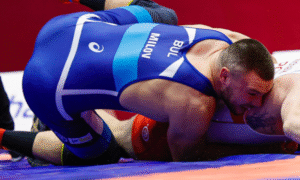The narrative for end-of-year material in 2020 is “not as many”. As in “not as many events”, which by extension translates to “not as many matches”. Past years? When counting age-groupers (age divisions younger than or separate from Senior) there had been several hundred, if not more, from which to choose. Not this time.
No. 2020 was special.
Not only was the season halted and then restarted seven months later (domestically), bouts from an important annual international tournament back in January were never archived — the all-encompassing Thor Masters in Denmark. In that event alone, there were more than a few matches worth multiple looks but, unfortunately, our Danish friends were unable to save the stream online for posterity’s sake.
No Olympics. No Worlds. No US Trials, for any age division. No Junior/Cadet Duals, no Fargo. A murky, shallow pool.
But, enough. Enough focusing on what we don’t have or didn’t get to see. Instead, the ship is to be steered towards the positive. Wrestling did still take place in 2020. Though it seems near everyone is in a rush to go ahead and flip that calendar to 2021, doing so in haste is a reckless proposition, lest we risk failing to acknowledge some of the brighter moments which provided hope, inspiration, and, of course, entertainment.
Top 10 USA Greco Matches of 2020
One inescapable byproduct of the abbreviated competitive ledger for US athletes is the spotlight that continues to shine on the happenings in Ottawa from this past March. There is no way around this. The implications of the Pan-American Olympic Qualifier cannot be overstated, particularly when understanding that the general training plan for the event was set in motion approximately 16 months prior. It wasn’t simply “a big deal”; outside of the Tokyo Olympics, the Pan-Am Qualifier was the biggest deal of the entire quadrennium. And when the winners of the Olympic Trials at 77 and 130 kilograms head off to Bulgaria this coming May, as they were originally supposed to last April, it will be the same thing all over again.
But thankfully, Ottawa was not the only event that occurred in ’20. We also had the Armed Forces Championships, Senior Nationals, Junior/U23 Nationals…and Rome and Thor Masters, though the former as mentioned is not available for viewing. That’s okay — a string of remarkable bouts were still gleaned for our audience without an issue. That’s the great thing about this sport; if you’re willing to dial in and pay attention, there is always something worth watching again and again and again.
Matches that made the cut did so according to any or all of the following parameters:
- Excitement/adrenaline.
- Perceived significance related to the athlete, the event, or both.
- Match videos are not obstructed by a paywall, and are therefore able to be viewed by the audience.
10. Payton Jacobson (Ringers) over Logan Hatch (EAP) 5-3
Setting:
63 kg — Final
Junior Nationals (Omaha, NE)
November 13
Jacobson/Hatch was a Junior National final. On paper, that’s really all it says. When you check the box score, it displays the points distribution separated into two periods. One wrestler got his hand raised, the other didn’t, and then seven more finals matches occurred to close out the tournament.
Of course, Jacobson/Hatch was a whole lot more than that.
It wasn’t one match in a vacuum to be contested, isolated, and eventually forgotten. And that is the natural instinct for viewers, both in November and even now six weeks later. The Junior National tournament was not a Trials. That detail, you’d surmise, seems to almost shorten the carrot at the end of the string. It felt that way for some prior to November 13. Maybe it still feels this way to those peering through jaded eyes, to some degree.
If true, then those people need to watch this match.
What Hatch and Jacobson accomplished — without pretense and simply because their respective skill-sets demanded it — demonstrated why the next generation of American Greco-Roman wrestling has a legitimate shot at catapulting the National program back into the global top tier. They ardently battled for position while scratching and clawing so as not to betray vulnerabilities. They remained disciplined, but active. Guarded, but intense. They embraced fundamentals through each phase; and in doing so, managed to perform like seasoned Seniors who are used to engaging in high-pressure overseas situations.
It was not a whirlwind of points. Hatch got his passive in the first and was unable to capitalize further. Jacobson, on the other hand, found success from par terre in the second period, which became responsible for the outcome. But it’s how they meshed together which matters the most. One issue with Greco-Roman in the US is that an obsession with scoring obscures what it takes to actually score. It’s not as easy as it looks, particularly when it involves two skillful, evenly-matched competitors. That’s why you need to invest in this bout. If you’re new to this discipline, let Jacobson and Hatch provide a free education on how age-group development is supposed to function.
9. Max Nowry (Army/WCAP) over Serif Kilic (TUR) via fall
Setting:
55 kg — Round 3
Matteo Pellicone Memorial (Rome, ITA)
January 15
Nowry was a firm candidate for gold at Pellicone. In his bracket resided a pair of excellent Turks (recent Individual World Cup silver Kilic and Dogus Ayaczi) as well as Ukrainian Andrii Semenchuk. Nowry had pinned Ayaczi for Pytlasinski bronze in ’19 but their return bout in Italy didn’t go too well for the American. Ayaczi used his passivity for a lift attempt that was disrupted into a gutwrench, and Nowry was penalized for a leg foul. Ayaczi had another chance from PT top, didn’t miss, and just like that it was over. Nowry, he wasn’t too thrilled regarding the outcome.
So he took it out on Ayaczi’s teammate. 55 kilos at Pellicone was a round-robin, making Nowry’s match against Kilic a fight for silver. Not only was it a completely one-sided affair, Nowry ended it with one of the fastest throws recorded in recent memory. And that finisher stands as the primary reason for this match’s inclusion on our list.
8. Xavier Johnson (Marines) over Ryan Mango (Army/WCAP) — 6-5
Setting:
63 kg — Round 3
Armed Forces Championships (NB Kitsap, WA)
February 22
The biggest match of the 2020 Armed Forces Championships dual between Army and the Marines. The optics dictated as such. Everyone knew the team score would be close, and there were other matchups which promised to deliver, perhaps in different ways. But Mango/Johnson stood out the most last February and, looking back, it still does.
Prior to the ’20 Armed Forces, two-time National champ Mango’s record against Johnson was 5-0, which included a series sweep from Final X: Lincoln. Johnson was beginning to close the gap, although you wondered if they would ever meet again, for the Marine had decided to head north to 67 kilograms in advance of the Olympic Year. It would take unique circumstances to bring them together again, at least one more time.
The reason why it happened was due to the Marines’ depth at 67. For Armed Forces, their triumvirate of Johnson, Jamel Johnson, and Ray Bunker were able to spread out into three different weight categories, allowing Xavier to return to 63. In that sense, it was as if he had dropped down to face Mango. The strategy for Johnson and the Marines unfolded similarly to that of a team trying to win an important high school or college dual (and later, in fact, the Marines would be declared the victors of the Armed Forces Championships for the first time in two decades on the heels of Vlad Dombrovskiy’s USADA sanction).
In the first period, Johnson raced out to a 5-0 lead when his passivity/PT chance led to a pair of lifts that totaled four points. Johnson had twice attempted to launch Mango but had to settle for two both times. Mango was hardly out of the running, despite his own par terre opportunity falling by the wayside and another point going in Johnson’s direction following a lost challenge. With :12 remaining, there was a blitz of action. Behind 6-1, Mango scored a takedown and immediately converted on a gutwrench at the boundary. Only :03 were left on the clock after that. Not enough time, even for Mango, giving Johnson his most memorable triumph to date over the course of his young but already-impressive career.
7. Daniel Miller (Marines) over Yanan Chen (CHN) via fall
Setting:
97 kg — Qualification round
Matteo Pellicone Memorial (Rome, ITA)
January 15
Miller had done this before, several times. Especially overseas. He has a knack for it. Just when it appears that a match is either slipping through his fingers, or about to morph into a prolonged pummel-fest, he does something that drastically upends the complexion of the proceedings.
Which is precisely what happened in this match.
Miller walked out after the break up 1-0 via passivity point but the slogging was tight. Chen was doing just enough to keep Miller at bay by pecking and prodding. More than serviceable were his mechanics in that regard. But passivity is passivity, a door that swings in both directions. Chen received his opportunity after the first minute of the second period and wrapped for a gut.
Remember: one item that has become an area of focus for US Seniors is what they do from par terre bottom. Whether it is strictly minding feel and position in an effort to avoid being turned or capitalizing on the exact right moment to step over, there is a strategy in play. In this case, Miller chose the latter option. The result gave way to quite the dramatic conclusion.
6. Calvin Germinaro (Minnesota Storm) over Zach Tolver (Interior Grappling Academy) 13-10
Setting:
72 kg — Semifinal
U23 Nationals (Omaha, NE)
November 13
The best performance from Tolver to date required two-time Senior Open runner-up Germinaro to engineer a furious rally that nearly went unnoticed when the dust from this tournament finally settled.
The combined 23 points are part of all this, even if one of them was the consequence of a lost challenge. The bigger part is actually Tolver. He flipped the spatula on a pair of nasty throws (one in the first period, another in the second) and, against an awful lot of opponents, that would have been it. He had even come close to nailing down a pin. Tolver went from station-to-station in his busy work, which provided an even more dynamic rendering to his offense.
It was a severe problem for Germinaro in the second period, who was behind by six before the bleeding stopped. But then he began chipping away. He wasn’t concerned with hitting homers, just singles and doubles. Eventually, the tide turned, and next thing you knew, Germinaro managed to erase his deficit by going on a scoring tear that didn’t receive even a modicum of the amount of attention it should have.
5. Patrick Smith (Minnesota Storm) over Alec Ortiz (Minnesota Storm) 4-1
Setting:
77 kg — Semifinal
US Senior Nationals (Coralville, IA)
October 9
Two-time World Teamer Smith and Ortiz have matches all the time. They have been competing against each other in practice for the better part of a decade, and have met on plenty of occasions in various tournaments through the years. You’ve seen this before. We all have. You know what you’re getting as soon as you slide a few dollar bills across the counter and the person in the booth hands over your ticket.
What makes their semifinal clash from October any different?
Two things.
1) It was Ortiz’s first domestic tournament in nearly two full seasons after suffering a kaleidoscope of knee tears. He did compete last February in Cuba but that was one match, he didn’t do very well, and no one saw it; 2) we aren’t guaranteed another one. We don’t know what will come of Smith and Ortiz after this Olympic cycle. We don’t know if they will both walk away and move onto something else, and we don’t know if they will continue competing, be it for four more years or until their bodies turn to dust. No one enjoys thinking about these prospects currently but they require consideration when watching this match.
One more item: Ortiz is not yet qualified for the Olympic Trials. While the US National event was not of procedural importance, it did serve as a critical baseline tune-up for Ortiz. He looked more than viable in each bout.
The energy. The intensity. The attitude. None of it waned, not for an instant. Six full minutes of attempted assault. How two wrestlers who are so close on and off the mat and know very well each and every wrinkle the other has to offer can still — after all of these years and on a seeming whim — battle with such ferocity is an anomaly even within American Greco, where familiarity is the order of the day everyday.
There was nothing lacking in this match. It was a semifinal, which helped its cause. That Smith acquired all of his points in the first period is the only oddity. Neither wrestler moved the needle in the second — yet, the second period might be more entertaining than the first. A verifiable slugfest between two of the nation’s most valued wrestling warriors operating at the peak of their powers.
4. Ray Bunker (Marines) over Joilson de Brito Ramos (BRA) 3-2
Setting:
72 kg — Final
Pan-American Championships (Ottawa, CAN)
March 6
Matches featuring Ray Bunker should be required viewing in wrestling rooms across the nation, regardless of age division or style. At the beginning of each season, coaches would do well to huddle their charges into a corner before finding a projector and pulling down a screen, that way nothing about the visual will get missed. Bunker matches cannot be fully appreciated by opening up an app on an iPhone. A large screen is necessary for everyone to take away the most important lesson each of his matches happens to avail.
Toughness.
Desire.
Bunker is either the fiercest competitor in the country, or there are several tied with him for the top spot. No one is ahead of him, and no other athlete has demonstrated more will or determination this quad. At best, a few contemporaries are in the argument.
The most intriguing part about Bunker is that he does his work within the confines of a rather limited arsenal. In four years, his technical proficiency has improved. Undoubtedly. But there is not a fan, coach, or fellow athlete who associates Bunker with refined technique, save for his reverse lift. Bunker does not win matches because of attacks. He wins because he never stops attacking.
Wouldn’t you know it, but such a methodology can prove extremely effective when it comes to breaking opponents down piece by piece until they are content with mere survival. Bunker doesn’t end matches at a high rate. What he does, however, is compel adversaries into wilting and wavering as the match progresses.
That’s how Bunker defeated de Brito Ramos, a superb Brazilian athlete with whom Ellis Coleman (Army/WCAP) had recently struggled. There was no secret sauce, no tricks up Bunker’s sleeve when it became his turn at the Pan-Ams. de Brito Ramos scored two on a headlock early in the first period. And then for the next three minutes of action, Bunker dug into the dirt and made de Brito Ramos have to answer for the transgression. To his credit, de Brito Ramos didn’t exhibit the same kind of weariness others have once the second period arrived. He wasn’t sagging over at the waist or begging for a pause.
But he could have used one.
Just like so many other bouts on this list, the rain came down via passivity/PT. Bunker’s “bite down and get ’em up any way you can” reverse lift did what it is designed to do. The lift itself actually looked fine upon impact, but the official chose to hold back two for the action and instead penalized de Brito Ramos for legs. In either case, two went to Bunker. From then on, the fight was all his. The result wasn’t going to change, not that Bunker took his advantage for granted. He worked de Brito Ramos forcefully in the ties till the whistle, staving off an explosive entry towards the end. And when that whistle was heard, de Brito Ramos bent over and rested his hands on his knees. Can’t blame him. We’ve seen it before.
3. Gabriel Rosillo (CUB) over G’Angelo Hancock (Sunkist) 11-8
Setting:
97 kg — Final
Pan-American Olympic Qualifier (Ottawa, CAN)
March 13
The problem with the Pan-American Olympic Qualifier is the finals. Unlike every other tournament with the exception of any other Qualifier beholden to similar procedures (i.e., top-2 secure their country’s spots in the Olympics at that weight), what matters most is the semifinal round. Semifinal winners achieve the premier objective, which has a habit of ingratiating finals matches that rarely deliver, that is if they are even contested.
But for some reason, Hancock and Rosillo decided to go for broke. It made no sense, yet all the sense in the world. They had battled twice the week prior, and a couple few times over the past year. Their only match which failed to offer even a touch of suspense was Hancock’s victory on March 6. In that bout, the three-time US World Team member got Rosillo out of there in dominant fashion.
There were no stakes involved in their March 13 finale. Hancock had trounced his first three opponents; Rosillo had to fight for his life against Kevin Mejia Castillo (HON) in the day’s opener, but after that went on cruise control. Both wrestlers had completed their qualification assignments, which for a moment broached an important question: Will they wrestle the final? Or will one of them just yield with a forfeit?
Sure enough, the pair made it to center mat — and proceeded to wreck the joint.
Hancock picked up two from a bodylock inside the first minute. He had the position adequately tightened but Rosillo had managed to wriggle and adjust enough to avoid exposure. After that, it was the Cuban who piled up the points. Rosillo nabbed a land-on-top takedown; then a reset and another takedown plus two guts. Hancock reversed to net two more for himself heading into the second frame.
Oh, the frenzy. They weren’t done. How could they be? This was personal, but not with malice. Hancock and Rosillo seem to enjoy their time together. That’s just it, though. There was a need here to empty the tank, to hold each other’s skills up to a mirror and appreciate the reflection. The next scoring sequence for Hancock came in the form of a crashing bodylock that tallied four. Back standing, and there was Rosillo with a takedown and a crisp 11-8 lead. The remainder of the period unfolded with a looming sense of danger. It was as though someone was destined to score again, you just wondered what it would look like, and how much it might matter with regard to the result.
Only :10 hung on the clock. Then :07, then :05. Then :03. Then :02. In a blink, Hancock locked the body and went to launch.
2. Joe Rau (TMWC/IRTC) over Luis Avendano Rojas (VEN) 4-4
Setting:
87 kg — Quarterfinal
Pan-American Olympic Qualifier (Ottawa, CAN)
March 13
Retrace the steps. Unless you’re new, you may already understand.
The Pan-American Olympic Qualifier brought forth the most significant performance of Rau’s career thus far.
Until that Friday in March, a Friday most in the United States will long remember for its predecession of the nationwide pandemic lockdown, Rau had shouldered four years’ worth of mental and emotional baggage left over from ’16. It hung over his head like a charcoal-grey cloud, taunting and tormenting his thoughts. Therefore, he pleaded for a chance at redemption.
The other component leading up to Ottawa was the presence of Luis Avendano Rojas, the versatile Venezuelan who had defeated Rau in the ’19 Pan-Am Games — and who had also fallen to Rau via tech the week previous to the ’20 Qualifier. That latter square-off provided Rau with a nice boost in confidence at a most opportune time, but it was also just one match. There would be another about which to worry.
The Qualifier, as established, was centered around advancing to the final, since top-2 athletes qualified their respective weight categories. Avendano wasn’t Rau’s only threat, Daniel Hechavarria was a potential problem, as well. But when the draws were declared, it was Avendano — again — for Rau in the opening round, and for the second week in a row.
The match on March 6? All Rau, all the time.
March 13 told a very different story.
Avendano, a capable and seasoned athlete, made a minor tweak to his approach against Rau. He had to. At the Championships, Rau had his way with Avendano in the tie-ups and swung off of modest exchanges and transferred them into legitimately-threatening body attacks. It was a bullying from start to finish. A week later, Avendano was hanging in there more and adjusting his knees and hips to meet Rau’s position, instead of allowing himself to be overrun on his heels. Baseline mechanics, maybe, but Avendano is an improvisor at his core, which is why he is not amenable to becoming subjugated to classical fundamentals. He likes expressing action a little differently for an upper-weight, you’d suppose.
The score was 4-0 after the first period. 4-0. On one hand, four points? Not a big deal. On the other, four points…at 87 kilograms…in a critical tournament? Kind of a big deal. But Rau’s resolve did not deviate. When the whistle for the second blew, he went back to work carrying his lunch pail. The brain had shut off. In Rau’s world, that’s good news.
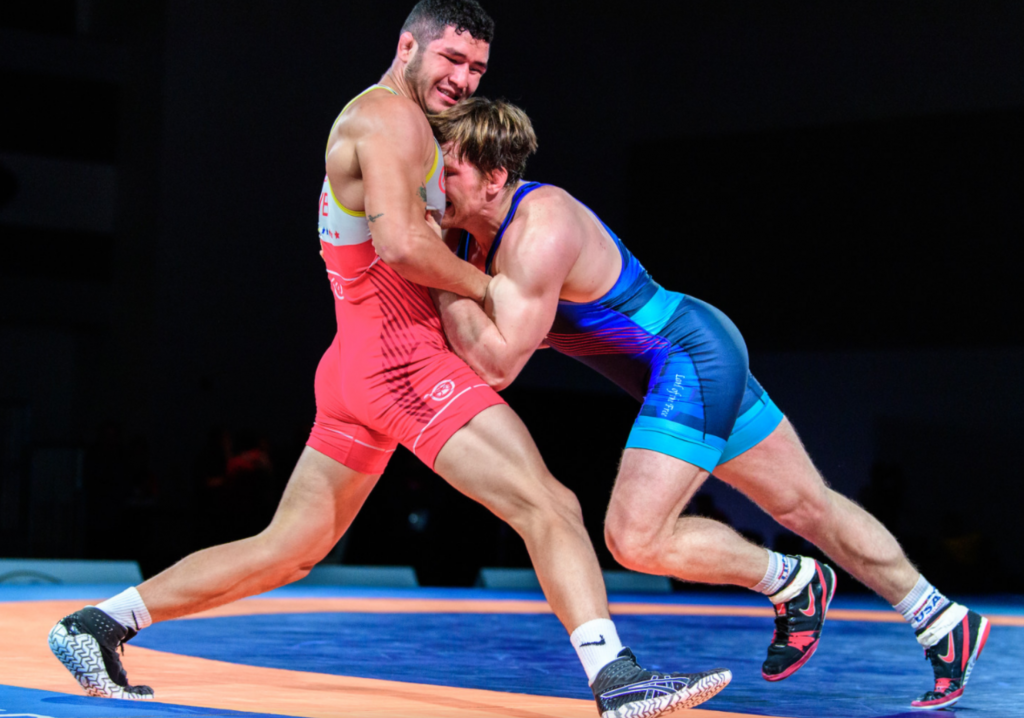
RAU PLOW — When he needed to the most, Rau (blue) called upon his ability to “body” an opponent towards, and then beyond, the zone. In this case, it was Venezuela’s Luis Avendano Rojas, who stepped out of bounds with under a minute remaining in their 87 kg quarterfinal contest. Rau prevailed in the next round, as well, which qualified the weight for Team USA in Tokyo. (Photo: Tony Rotundo)
Passivity. Rau received his chance to impart some meaningful damage and responded with a gutwrench. Just like that, the score was 4-3. After the reset, two minutes remained. Plenty of time to collect another point. The issue? Avendano wasn’t fading. He wasn’t a brimming source of energy, either, but he did stay right there in the pocket probing for athletic counters. In fact, he came awfully close on a takedown and/or step-out with 90 ticks to go, only to have Rau peel, hip, and step out of peril akin to a folkstyle standup.
On and on the joust went. Maddening. One point. A measly point. Avendano knew it, too, but he didn’t close off completely. They were mired in loose, extended collar ties, waltzing around the mat and wasting time. Rau had to find a handle, find something. A door opened when he brought his elbows in and concentrated his hands on Avendano’s waist. Rau then plowed forward, putting Avendano on skates and then off the edge.
One point.
Avendano wanted to pour everything he had into undoing what had just been done. Unfortunately for him, he didn’t have much left. His reserves had met their limit, but in valiance. He hadn’t quit. He was simply bested by a man who wouldn’t couldn’t be denied. That’s how it goes. How it should always go.
Rau’s hand would be raised twice more at the Pan-Am Qualifier following this match. On paper, that second win was the entire purpose for competing. Within the realm of Greco-Roman wrestling reality, this triumph mattered much more.
1. Ildar Hafizov (Army/WCAP) over Andres Montano Arroyo (ECU) 4-3
Setting:
60 kg — Round-of-16
Pan-American Olympic Qualifier (Ottawa, CAN)
March 13
“I guess this is how it is supposed to be,” Hafizov said two weeks after the fact.
Hafizov and Rau had enjoyed a kinship. Both felt the sting of having come up short in ’16 and displayed that burden on their sleeves. For Hafizov, it was a little less painful. He had lost to Jesse Thielke in the Trials finals, and Thielke went on to qualify 59 kilograms in Istanbul. And, believe it or not, no one was happier about that than Hafizov (who is now teammates with Thielke as part of Army/WCAP). Because, at least the job had gotten done eventually.
But there was still a lingering uneasiness. Hafizov began competing for the US towards the end of the previous Olympic cycle, desiring nothing more than to do something big, something dramatic, for his adopted country. He certainly earned his opportunities. Following a World Team appearance in ’17, Hafizov made it to the main event again in ’19. The World Championships in Nur-Sultan, which acted as the first qualifying tournament of the year, hit close to home — literally. Hafizov’s family still resides in his native Uzbekistan and several of his relatives were able to watch him in person for the first time in over half a decade. He looked forward to it, but exited the tournament finishing far out of the running.
As soon as Nur-Sultan ended, most of the talk surrounding the season revolved around the Ottawa qualifier and those of whom were thought to present the most formidable obstacles for the American squad. Each weight category had their own names attached, specifically in brackets where Cubans could pose a problem. To be sure, Luis Orta Sanchez was part of the lot at 60 kilograms, but the man most were concerned with was Montano Arroyo.
Boasting a decorated record, a showing in Rio, and an air of unpredictable explosiveness, Montano is a difficult puzzle to solve. He can be clean and technical one moment, an athletic brawler the next. In between, he is also an adept scorer from par terre and just a frustrating overall competitor. A unique formula he brings to the table.
And of course, Hafizov drew him in the opening round.
Sporting an elbow pad on his right arm, Hafizov worked to Montano’s left side at the wrist as the action got underway and soon found himself snapped into a front headlock. He ambled out of the hold but stepped off the line whilst regaining his footing. They chipped from a distance, mostly, in the early stages. This just wasn’t the kind of match-up that would denote a need for constant chest-to-chest exchanges. Neither really operates in such a manner; plus, it hinders the angular attacks both tend to prefer. Even with a lack of meaningful attempts, the pace observed a high tempo. Couple that with the whole “all in” nature of the bout and its associated implications, particularly for Hafizov, and you didn’t need a scoreboard to tell your heart to begin speeding up.
Shortly into the second period, Montano increased his lead to 3-0 thanks to an overextension from Hafizov that resulted in a takedown. Not a promising development. But when Montano clasped and rolled for a gutwrench, Hafizov stepped over and was awarded exposure points; then, after Montano scrambled to his feet on the boundary, Hafizov nudged him out for another point and a 3-3 criteria advantage. The pendulum had swung and, for the first time all match, the US side was able to catch their breath.
After the restart, Hafizov scanned with increased confidence. There was no trepidation, no waiting. If Montano wanted to explode to the body, a calling card, then it made sense to keep engaging rather than committing to go-nowhere tie-ups. This is one of Hafizov’s strengths, the foresight to know that opponents are more dangerous when your foot is off the accelerator. Prevent defense doesn’t jive so well in the lighter weights. As anticipated, Montano set up a high dive. Hafizov caught him in his clutches and held over the top of Montano’s head.
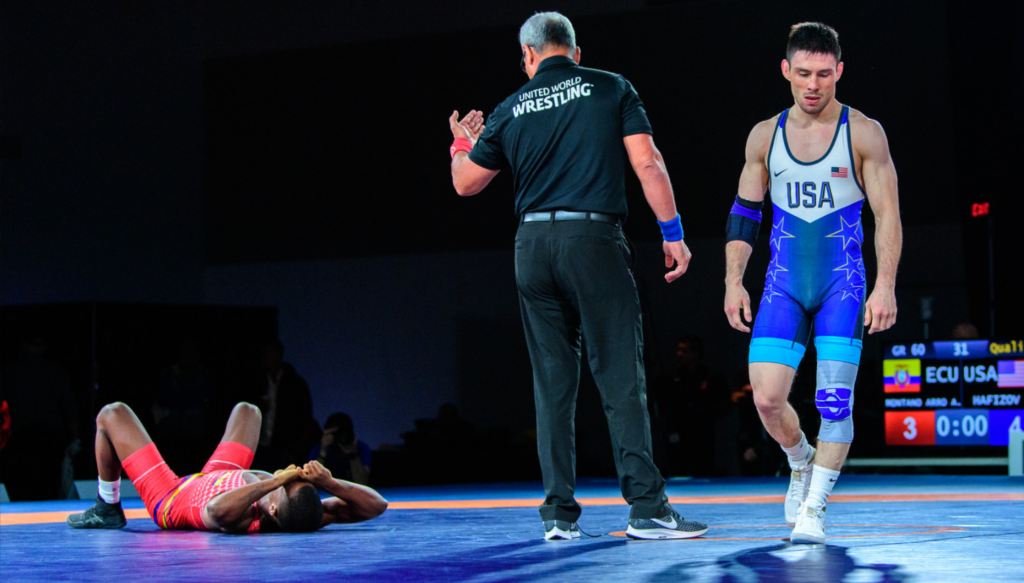
Hafizov (blue) erased a 3-0 second-period deficit to overcome Andres Montano Arroyo (ECU) in the first round of the Pan-American Olympic Qualifier. Hafizov would later qualify 60 kilgorams for the US at the Tokyo Olympics by reaching the gold-medal match. (Photo: Tony Rotundo)
Montano’s next decision produced the shining sequence of the match. While Hafizov kept his hold over the head, Montano ducked under and wrapped the body. In the same motion, Hafizov reacted instantaneously by arching a loose lateral. His response was so quick — and his instincts so sharp — that Montano never saw it coming. The action could have been scored for two points but the officials settled on one, given that Montano was yanked off the edge. Nevertheless, criteria was erased and Hafizov’s margin stood at 4-3.
Again, Hafizov refused to dial it down. He wouldn’t be reckless. He also was not about to play the role of bystander in his own match. All of Montano’s movements could be felt if he stayed attached, so he did. The desperate attempts arrived in successive waves. Montano whiffed on an arm spin, dipped levels, darted up, dime-stepped to angles, reached for the body from left field…
Hafizov wasn’t hard to find. He was right there in front of Montano’s face the entire time. He wasn’t going anywhere. Five years and some change since he had touched down in the United States in search of a new start, Hafizov had finally and firmly planted his flag. The same flag that was visible on his singlet during an unforgettable day north of the border. The same flag they all wore.
Listen to “5PM43: Christmas Time with Millersville’s Kerry Regner” on Spreaker.
SUBSCRIBE TO THE FIVE POINT MOVE PODCAST
iTunes | Stitcher | Spreaker | Google Play Music







